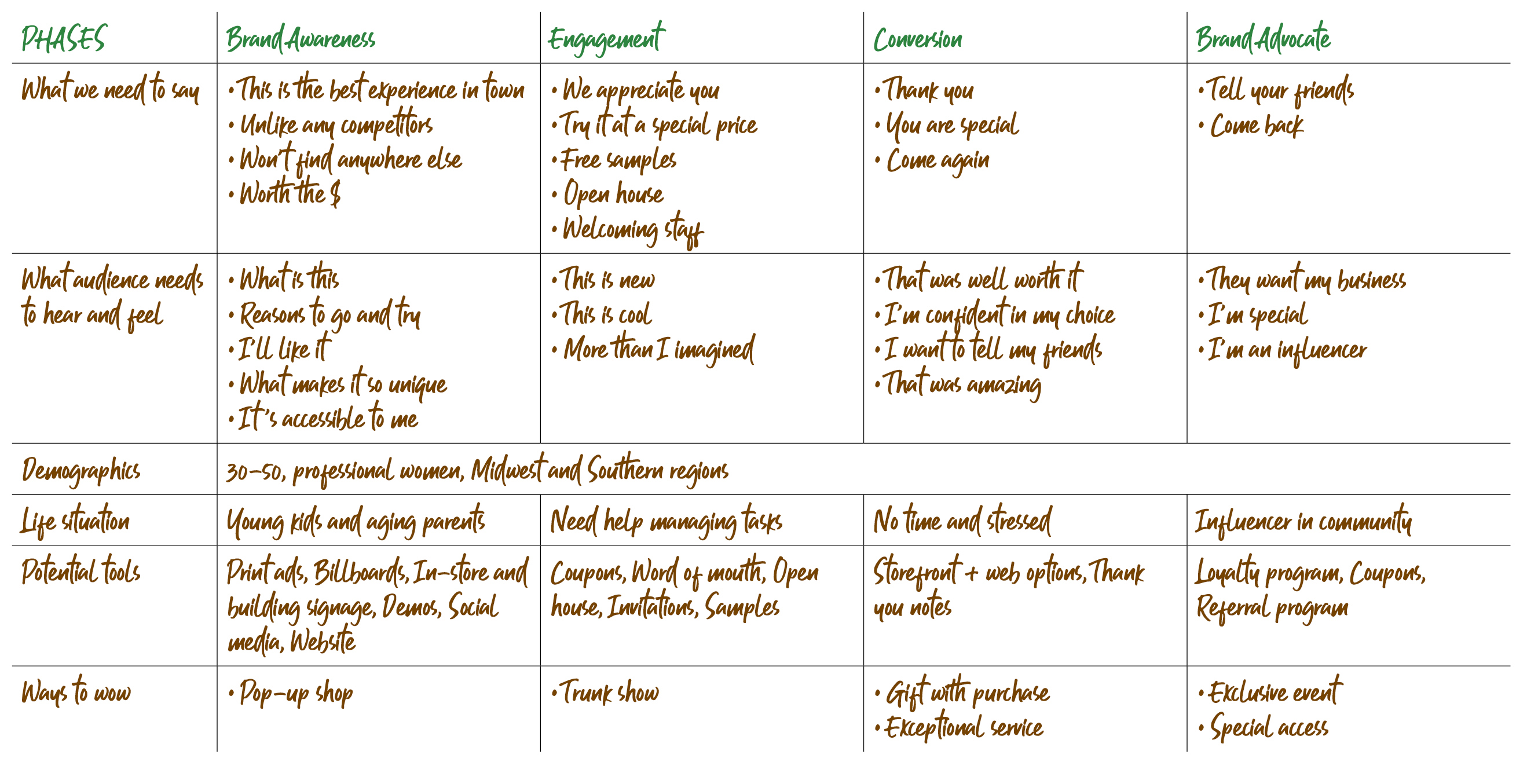Map Your Customer’s Journey
Identify customers’ needs during their engagement with your brand in this brainstorming technique.

Making a map of your customers’ needs, wants, and expectations can help you empathize with their journey. Use this map to identify touchpoints that will not only enhance their perception of your brand but delight along the way.
Map out the experience of your brand
Start by making a grid. Along the top of the grid list out each step in your customer’s experience of your brand. The basic steps might be brand awareness, engagement, conversion, and brand advocate but there are likely many smaller steps unique to your sector. Is the experience in person or just online? Do you have multiple branches or one point of contact? Are you looking for many repeat conversions (such as at a retail store) or an ongoing contractual relationship (such as a purchase of software or membership in a club)?
What do you need to say?
In the next row of the grid, list out what you as an organization need to say to your customer at each phase. What information do you need to get across? Is it about the features and benefits of your product? Your commitment to social causes? Your superior service? Key deadlines for events? Think about the most important message at each stage of the customer experience.
What does your audience need to hear and feel?
Now, step into your audiences’ shoes. What information do they care about? What will help them make a buying decision or move them to action? How do you want them to feel? Intrigued? Excited? Relieved?
Think about their physical experience. If you have a storefront, how easy is it to find? Is it clean? What does it smell like? Are they greeted in a friendly way? Do they know what steps to take? If the experience is purely online, do they have all the information presented in a clear manner? Do incentives like coupon codes pop up at the right time or before they are ready?
What are they bringing to the experience? Basic demographics such as age, race, gender, income, and location can give you some clues about their needs and wants. Dig a little deeper and think about their life stage and cultural situation. Do they have young children? Aging parents? Economic stresses? What is their mental state? Are they stressed out? Ready to relax? Excited for the future?
What tools can you use?
In the final row of the grid, list out some potential tools you can use for touchpoints with your customers. Keeping in mind what you need to say and how they want to feel, what methods can you use to achieve both goals? It could be as simple as reminder emails or as elaborate as customized gifts. The tools you use will depend on your audience, your industry, your projected ROI, and your brand goals.
Think about the right level of contact at each phase. You want to stay in front of them but not hound or harass them, so they shut down.
What can you do to wow them?
Once you understand their basic needs, go one step further and explore what you can do to wow them. What would delight them along the way? Anticipating what they want before they ask? Providing an add-on service for free? Following up with a personalized communication?
Dig deeper
You can expand this exercise by segmenting your audiences and doing a grid for each segment. You may find their paths, what you want to say, and what they want to hear are very different depending on the segment. You can also expand the audience section to identify pain and gain points at each step of the experience. If you know when a customer is likely to feel uneasy, you can alleviate that discomfort by being proactive.
Once you have your grids filled in, you will have the building blocks for a marketing plan. Use the grid to develop your messaging, identify your channels, and plan for ongoing campaigns.

Targeted Messages
How to develop language to reach key buyers.
Guide Your Readers with Layers
Layering content with a combination of visual and verbal cues will increase engagement and comprehension.
What Doesn’t Fit
Give clarity to your brand by communicating what you don’t do.



